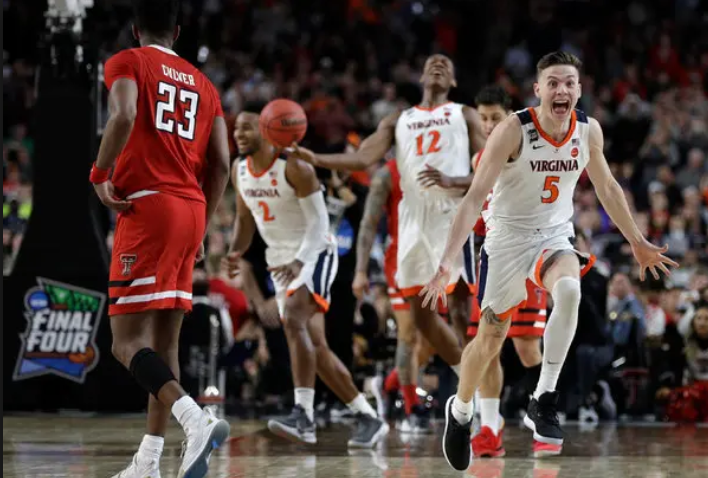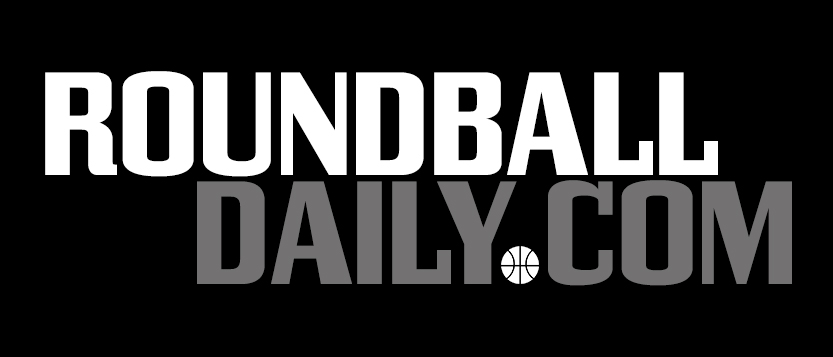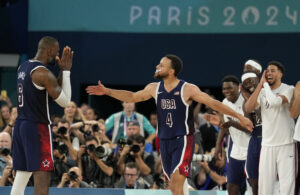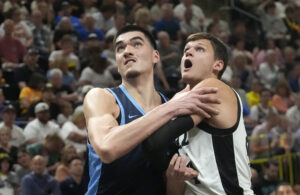- Attacking style not the only reason some Tottenham fans will back Ange Postecoglou until the bitter endPosted 4 months ago
- Paris Olympics takeaways: What did Team USA’s crunch-time lineup say about NBA’s hierarchy?Posted 9 months ago
- Zach Edey posted an easy double-double in Summer League debut. Here’s why he’ll succeed in NBAPosted 11 months ago
- What will we most remember these champion Boston Celtics for?Posted 11 months ago
- After long, seven-year road filled with excruciating losses, Celtics’ coast to NBA title felt ‘surreal’Posted 11 months ago
- South Florida men’s basketball is on an unbelievable heater– but also still on the bubblePosted 1 year ago
- Kobe Bufkin is balling out for Atlanta Hawks’ G League team. When will he be called up to NBA?Posted 1 year ago
- Former Knicks guards Immanuel Quickley, RJ Barrett may yet prove Raptors won the OG Anunoby tradePosted 1 year ago
- Rebounding savant Oscar Tshiebwe finally gets NBA chance he’s deserved for yearsPosted 1 year ago
- Is Tyrese Maxey vs. Tyrese Haliburton the next great NBA guard rivalry?Posted 2 years ago
Virginia basketball’s first national title isn’t just about redemption–it’s about validation
- Updated: April 15, 2019

Virginia’s national title wasn’t just about redeeming itself for a shocking loss to a 16-seed. It was about finishing unfinished business for a program that had known success and ultimate heartbreak. (David J. Phillip/Associated Press)
The dichotomy between the two scenes is stirring, no doubt.
One year crying at center court as Madness erupts around you– Jairus Lyles and an underdog of epic proportions having embarrassed you when it mattered most.
The next year you’re jumping around with teammates as confetti falls from the ceiling–your nerve held rock-strong on one of the world’s biggest sporting stages in front of millions worldwide, their palms sweaty just watching you navigate this life-altering moment in time.
It’s tempting to frame Virginia’s national title as a comeback story or a road to redemption. It’s easy, from the outside, to reduce it to a story of perseverance and “Here’s why you never give up.”
But for someone who’s followed Virginia basketball for years– from Ralph Sampson through Bryan Stith through Sean Singletary through Mike Scott and Joe Harris– this isn’t just a two-year tale that reads like a Biblical chapter.
Rather, this is the culmination of a long road back to the summit of the sport for a program that was once considered among college basketball’s elite.
When Hall of Famer Ralph Sampson donned that Virginia jersey back in the early ’80s, the Cavaliers were the No. 1 team in the country. They were a college basketball Goliath, mentioned in the same breath as Georgetown, Houston, North Carolina and Indiana.
UVA averaged 26 wins per season from 1980-84 (more impressive back then because there were fewer games), and reached the Final Four twice.
Sampson led them there for the first time in 1981, when the team went 29-4 and won the ACC. Once there, they lost to conference rival North Carolina, which was led by James Worthy and Sam Perkins. The Tar Heels would fall to Isiah Thomas and Indiana in the national title game. Big Ralph would leave Charlottesville with three National Player of the Year awards (’81, ’82 and ’83), but not a national title.
Virginia made it back to the Final Four in 1984, with a team stocked with four NBA players (Olden Polynice, Rick Carlisle, Kenton Edelin and Othell Wilson), but fell to Akeem Olajuwon and Houston in the national semifinals. Patrick Ewing’s Georgetown Hoyas would best Akeem’s Cougars for the title.
Still, despite all of that, Virginia was mostly known for another near-impossible defeat long before Jairus Lyles or K.J. Maura were even born.
In 1982, No. 1 Virginia lost to NAIA member Chaminade — a game that remains among the most stunning results in the history of college basketball.
Virginia went on to win 29 games and finish second in the ACC that year, but the Chaminade loss might have revealed something about that team that no one would have otherwise known. The Cavs were done in by another legendary underdog– Jim Valvano’s NC State team– in the Elite Eight.
Losing in the biggest moments was kind of Virginia’s thing in that era. But at least the Cavaliers were relevant. UVA made it as far as the Elite Eight just once more under then-coach Terry Holland– who departed in 1990 with a record of 326-173 at the school.
Successors Jeff Jones, Pete Gillen and Dave Leitao all had moments of success (okay, Jones more so than the other two), but the program gradually fell into mediocrity.
Then came Tony Bennett.
When Bennett, then 39, was hired to take over the program in 2009, those who knew basketball knew it was a fantastic hire.
Bennett had pulled a minor miracle at Washington State, lifting a program that rarely snuck out of the Pac-12 basement to the Sweet 16– and turning players like Kyle Weaver and Derrick Low into stars.
Bennett had learned under his father, Dick, who back in 2000 guided eighth-seeded Wisconsin on a miraculous run to the Final Four, mostly through suffocating, frustrating defense and equally-frustrating, patient offense. That Final Four run came before the Badgers had any success on the national level, and it jump-started the program.
In his first few years at Virginia, Tony Bennett gradually began to change the culture. He inherited a team that had gone 10-18, and 4-12 in the ACC in 2009, and in three years, had the program in the NCAA Tournament, playing his signature pack-line defense.
Again, Bennett helped turn players like Mike Scott, Joe Harris and Justin Anderson into stars. Malcolm Brogdon, who won the 2016 ACC Player of the Year award, has also gone on to big things in the NBA, where he won 2017 Rookie of the Year and is a big piece for the Eastern Conference-leading Milwaukee Bucks.
Virginia broke through behind Brogdon, Anderson and London Perrantes in 2014, winning 30 games and capturing the ACC’s regular season and tournament titles. They earned a No. 1 seed in the NCAA’s for the first time since the ’80s, but fell to fourth-seeded Michigan State in the Sweet 16.
The Cavs earned a No. 2 seed the following year, but again lost to Michigan State, this time in the second round. In 2016, Virginia earned a No. 1 seed again, but collapsed down the stretch in the Elite Eight against Syracuse, gifting the 10th-seeded Orange a trip to the Final Four.
Then there was 2018, when Virginia finished 31-3, ran through the murderer’s row of the ACC at 17-1, and won both the conference regular season and tournament titles. They were the tournament’s No. 1 overall seed — and then, the unthinkable happened.
To say that the loss to UMBC didn’t fuel this year’s Virginia squad would be incorrect–it definitely had an affect on their preparation, approach, and motivation to get back to the Dance and prove that they are one of the nation’s elite.
But for Tony Bennett, his players and Virginia fans, it wasn’t about all that.
This national title wasn’t just about redemption for last year.
It was about finally getting Virginia basketball to the mountaintop — heights Ralph Sampson couldn’t quite lift them to with his outsized arms — a place the program has often seen within reach but has never quite found the inner reserve to get to.
Virginia basketball finally has its validation.
And just like all of those 30-win seasons and ACC titles, it was well-earned.



